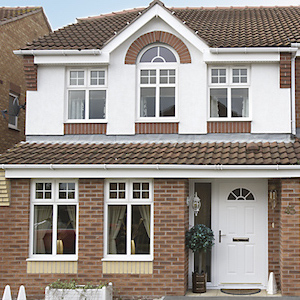
Modern Window Installer
Overview
-
Founded Date noviembre 14, 1961
-
Sectors Tecnología
-
Posted Jobs 0
-
Viewed 44
Company Description
Casement Window Repair Tips To Relax Your Everyday Lifethe Only Casement Window Repair Trick Every Person Should Be Able To
A Comprehensive Guide to Casement Window Repair
Casement windows, identified by their hinged sides that swing open and closed like a door, deal unequaled ventilation and unobstructed views. Nevertheless, like any other home function, they might ultimately need repairs due to use and tear, weather, or mishaps. This post offers an informative summary of Casement Window Repair (dreamyourjobs.com), exploring common problems, repair techniques, and maintenance ideas.
The Anatomy of a Casement Window
Before diving into repairs, it’s necessary to understand the structure of a casement window. Generally, these windows consist of the following parts:
| Component | Description |
|---|---|
| Frame | The external structure that supports the window. |
| Sash | The movable part of the window that holds the glass. |
| Hinges | Allow the sash to open and close. |
| Operator | The mechanism that facilitates the window’s motion, often a crank. |
| Weather stripping | Seals edges to avoid air and water leaks. |
| Glass pane | The transparent component that supplies presence. |
Comprehending these elements can help homeowners identify problems more quickly and carry out repair work with confidence.
Common Issues with Casement Windows
Casement windows may face a number of issues, including:
- Difficulty Opening or Closing: This is often due to misaligned hinges, harmed operators, or built up debris.
- Drafts or Water Leaks: Faulty weather stripping or seals can lead to drafts or unwanted water going into the home.
- Broken Glass: Issues might arise from impacts or severe weather.
- Decomposing Frame or Sash: Especially common in wood frames, rot can compromise the window’s stability.
- Rusty Hinges or Operators: Corrosion can hinder the function of the window.
Repair Techniques for Casement Windows
1. Difficulty Opening or Closing
- Recognize the Cause: Check if the hinges are rusted or damaged. Examine the operator for wear.
- Change the Hinges: If the window is misaligned, tightening up or straightening the hinges may resolve the problem.
- Oil Components: Use a silicone spray or graphite lubricant on hinges and operators to decrease friction.
2. Attending To Drafts or Water Leaks
- Inspect Weather Stripping: If it appears worn or harmed, it may need replacement.
- Change Weather Stripping: Remove the old removing and clean the frames. Procedure and cut brand-new weather condition stripping to size and use it according to the producer’s instructions.
- Examine for Caulk Gaps: Reapply caulking around the window frame if gaps are discovered to improve insulation.
3. Fixing Broken Glass
- Remove the Broken Pane: Carefully get pieces of the damaged glass and get rid of them securely.
- Install New Glass: Measure the frame, cut a new glass pane, and secure it using glazing points and a bead of silicone caulk or glazing substance.
4. Fixing Rotting Frame or Sash
- Determine Affected Areas: Inspect for soft spots in the wood.
- Eliminate Rot: Use a chisel to cut out the impacted wood, guaranteeing you reach solid product.
- Fill and Seal: Apply a wood filler to the area and sand down to ensure a smooth finish. Seal with paint or polyurethane to secure against moisture.
5. Attending To Rusty Hinges or Operators
- Remove the Rust: Use sandpaper or a wire brush to remove rust from metal parts.
- Apply Rust Inhibitor: After cleaning, use a rust-inhibiting primer before repainting or oiling.
- Change If Necessary: If the hinge or operator can not be restored, consider replacing it for optimal functionality.
Maintenance Tips for Longevity
Preventative maintenance can boost the life-span of casement windows:
- Regular Cleaning: Clean the glass and frame regularly to prevent dirt buildup.
- Lubrication: Lubricate the hinges and operators yearly to maintain smooth operation.
- Check Weather Stripping: Check weather removing every year to ensure it’s undamaged and functional.
- Periodic Painting/Staining: For wood frames, reseal or repaint every couple of years to secure against wetness and decay.
Regularly Asked Questions (FAQs)
1. How typically should I inspect my casement windows?
It’s recommended to check your casement windows at least as soon as a year, inspecting for any signs of damage, wear, or weatherization issues.
2. Can I change the glass in a casement window myself?
Yes, replacing glass can be a DIY job if you have the right tools and products, although care must be taken, specifically when handling glass.
3. How do I know when to replace my casement windows?
If you discover significant structural damage, persistent leaks, or inefficiencies in insulation regardless of repair work, it may be time to consider total replacement.

4. Why does my casement window leak during heavy rain?
Poor weather condition removing, inadequate caulking, and harmed seals can lead to leaks in casement windows throughout heavy rains. Regular maintenance and prompt repair work can reduce this concern.
Fixing casement windows can seem difficult, however with an understanding of typical problems and solutions, house owners can preserve their windows effectively. Routine inspection and upkeep are important to making sure long lasting performance. Must issues arise beyond what DIY repairs can deal with, looking for professional help might be the very best course of action. By proactively attending to repair work and upkeep, casement windows can continue to boost any home for years to come.
